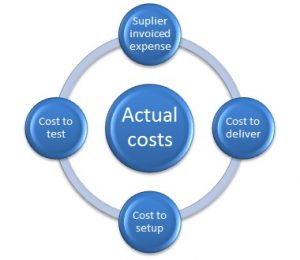
Review the transaction details to ensure accuracy, and make any necessary adjustments or additions. QuickBooks moves the money from Undeposited Funds into your bank account, just like your actual bank deposit. All payments in the Undeposited Funds Account will automatically appear in the Bank Deposit window. The most common way to record sales for retail businesses and restaurants with QuickBooks desktop is to use sales receipts and charge a customer who will pay immediately.
When you receive a payment from a customer, QuickBooks automatically assigns it to the undeposited funds account, rather than directly to your bank account. Clearing out undeposited funds in QuickBooks involves specific procedures and steps to ensure accurate reconciliation of pending payments and deposits within the software. This step involves reviewing all transactions to confirm that the funds awaiting deposit match the actual amounts received. It helps to reconcile any inconsistencies and prevent errors in financial reporting. Verifying the undeposited funds account is crucial in the process of fixing discrepancies, ensuring that all pending payments are accurately recorded and accounted for in QuickBooks Online.

How do I transfer the funds from my undeposited account into my bank?
The interface for managing undeposited funds in Quickbooks Online is more intuitive, with a simpler, more user-friendly workflow when compared to the Desktop version. If you run your own business or deal with accounting, you must have heard the name of the most popular accounting software for small businesses in 2023 according to Forbes Advisor-QuickBooks. Best known for its bookkeeping software, QuickBooks provides many other accounting and finance solutions that might help you run a business and even help you to run your personal finances.
The next step in clearing undeposited funds involves creating a bank deposit in QuickBooks Online to consolidate and record the pending payments for eventual deposit into the company’s bank account. This process enables businesses to reconcile their accounts effectively, providing a clear picture of all pending transactions and their eventual deposit into the bank. It plays a pivotal role in maintaining financial transparency, aiding in the smooth functioning of the clearing process in QuickBooks Online.
What is the Undeposited Funds Account in QuickBooks?
While processing invoice payments outside of QuickBooks and receiving payments for an invoice, QuickBooks will put them into Undeposited Funds automatically. With your deposit slip statement of retained earnings definition in hand, you can record a bank deposit and combine the payments in QuickBooks. All payments in the Undeposited Funds account automatically appear in the Bank Deposit window. Put payments into the Undeposited Funds account until you’re ready to combine them. When you have your deposit slip, you can combine payments from Undeposited Funds into a single record.
More Accurate Reports
- Clearing undeposited funds in QuickBooks Desktop involves specific procedures and steps to ensure accurate reconciliation of pending payments and deposits within the desktop software.
- The process of clearing undeposited funds in QuickBooks Online involves several important steps to ensure accurate recording and reconciliation of payments.
- Unattended undeposited funds may lead to inaccurate financial reporting, which can have detrimental effects on decision-making and overall financial stability.
This should be the same account that corresponds to your actual bank statement. The Undeposited Funds account is used in QuickBooks to record and hold all payments until they are physically deposited at your real-life bank. However, if you connect your bank and credit card accounts to QuickBooks, it automatically downloads all your transactions. The process described in the previous section repeats for as many sales receipts as needed. Finally, you can see the number of payments in Undeposited Funds on the Record Deposits icon.
How to Move Undeposited Funds in Quickbooks Desktop?
Reconciling accounts allows businesses to how to find your landlord gain a clear understanding of their financial status, enabling them to make informed decisions for future financial planning and budgeting. It also aids in maintaining compliance and transparency, contributing to the overall integrity of the financial records. These funds serve as a temporary holding account and allow for grouping multiple payments together before depositing them into the designated bank account. This process streamlines the bank reconciliation process and ensures that the company’s financial records accurately reflect the transactions. By using undeposited funds in Quickbooks, businesses can ensure that their financial transactions are accurately recorded and managed. This helps in organizing cash receipts and payments, preventing errors, and maintaining an accurate reflection of the company’s financial position.
If you encounter any discrepancies or have specific fifo and lifo accounting questions, consult with a professional accountant or refer to the QuickBooks Online resources for further guidance. In QuickBooks Online, navigate to the “+ New” option and select “Bank Deposit” from the drop-down menu. This will open the bank deposit form where you can begin the process of clearing undeposited funds.